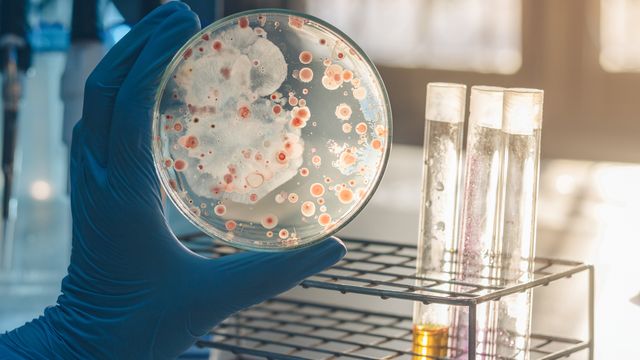Staphylococcus aureus Culture Testing in Dairy Products
The presence of Staphylococcus aureus (S. aureus) in dairy products poses significant health risks, as the bacterium can produce toxins that lead to foodborne illnesses such as staphylococcal enterotoxicosis. This makes it imperative for quality managers and compliance officers in the dairy industry to implement stringent testing protocols aimed at ensuring product safety.
Staphylococcus aureus culture testing is a vital step in this process, enabling laboratories to identify the presence of S. aureus in raw milk or processed dairy products through microbiological methods. This service is particularly crucial for ensuring that dairy products meet regulatory standards set by organizations like the Food and Drug Administration (FDA), the European Union's Codex Alimentarius Commission, and others.
The testing procedure typically involves several key steps: sample collection, inoculation onto selective media, incubation, and final identification. Laboratories use specialized growth media such as Baird-Parker plates or mannitol salt agar to facilitate the isolation of S. aureus colonies. These colonies are then further identified using biochemical tests like coagulase testing.
The importance of this service cannot be overstated. Compliance with regulatory standards not only protects public health but also enhances consumer confidence in dairy products, thereby safeguarding brand reputation and market share for dairy producers and processors.
It is essential to note that the choice of media, incubation conditions, and interpretation of results should align strictly with current guidelines from authoritative bodies. Misinterpretation or deviation from these standards can lead to false positives or negatives, compromising product safety.
Why It Matters
The presence of Staphylococcus aureus in dairy products is a critical issue that impacts both public health and the dairy industry's reputation. The bacterium can survive in various parts of the dairy production process, from raw milk collection to final product packaging.
One of the primary concerns with S. aureus contamination is its potential to produce enterotoxins, which are responsible for causing foodborne illnesses such as staphylococcal food poisoning. These toxins can be produced even in heat-treated dairy products, making it essential to detect and eliminate any contamination at all stages.
In addition to the health risks, S. aureus contamination also leads to economic losses due to product recalls and consumer distrust. Ensuring that dairy products are free from this bacterium is a fundamental responsibility of quality managers and compliance officers in the sector. By adhering to strict testing protocols, these professionals can help maintain the integrity of the supply chain and protect public health.
From an operational perspective, accurate and consistent S. aureus culture testing ensures that dairy products meet stringent hygiene standards set by regulatory bodies worldwide. This not only enhances product safety but also facilitates smoother operations within the dairy industry.
Industry Applications
- Dairy farms: Ensuring raw milk is free from S. aureus before processing.
- Dairy processors: Detecting any contamination in pasteurized or sterilized products to maintain quality and safety standards.
- Distribution centers: Monitoring for potential contamination during transit and storage.
- Sales and retail outlets: Verifying product safety at the point of sale to protect consumer health.
Effective S. aureus culture testing is a cornerstone of comprehensive food safety programs in the dairy sector, contributing significantly to maintaining high standards of hygiene and quality across all stages of production and distribution.
Use Cases and Application Examples
The application of Staphylococcus aureus culture testing extends beyond just compliance with regulatory requirements. It also plays a pivotal role in maintaining the reputation and credibility of dairy brands. For instance, a well-known dairy brand might implement this test as part of its internal quality control processes to ensure that every batch of milk or cheese is free from contaminants.
In another scenario, a research and development (R&D) engineer at a dairy company might use S. aureus culture testing to identify potential sources of contamination in their production process. This could involve investigating whether certain equipment cleaning protocols are effective or examining the impact of different raw milk batches on final product quality.
Furthermore, procurement officers may utilize this service to assess the microbiological quality of raw materials sourced from suppliers. By ensuring that all incoming raw milk meets stringent standards, they can mitigate risks associated with contamination and maintain consistent product quality across different production runs.





